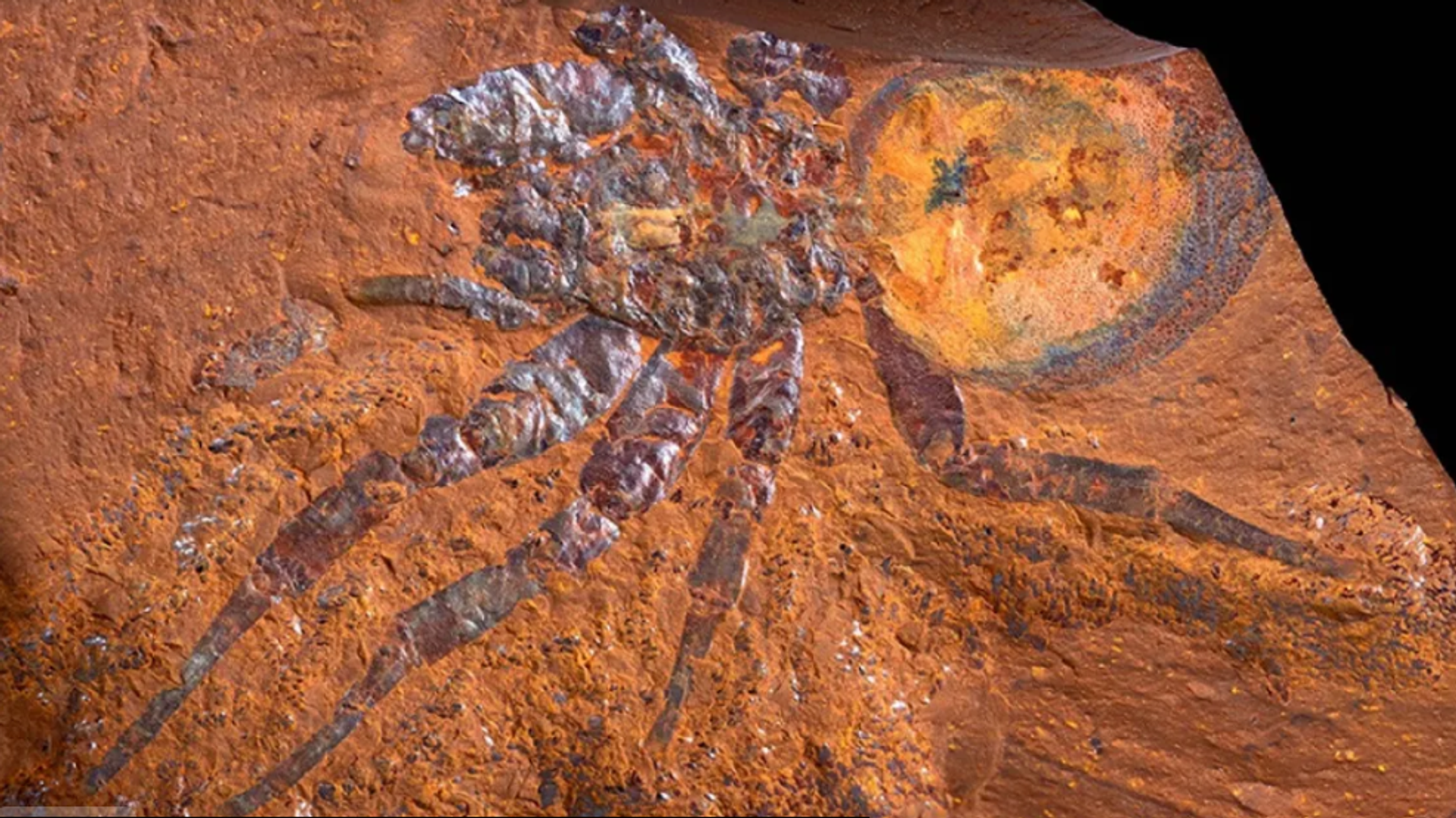https://sputnikglobe.com/20230925/15-million-year-old-spider-fossil-unearthed-second-largest-ever-found-1113640894.html
15-Million-Year-Old Spider Fossil Unearthed, Second Largest Ever Found
15-Million-Year-Old Spider Fossil Unearthed, Second Largest Ever Found
Sputnik International
Scientists uncovered a 15-million-year-old spider fossil in Australia, which is recognized as the second-largest spider fossil ever found, shedding light on a period during the Miocene epoch.
2023-09-25T01:42+0000
2023-09-25T01:42+0000
2023-09-25T01:42+0000
beyond politics
science & tech
australia
spider
spiders
ancient history
https://cdn1.img.sputnikglobe.com/img/07e7/09/19/1113640549_11:0:996:554_1920x0_80_0_0_f103542011d94e5fef710c2542e19c0b.png
Amidst a fascinating chapter in Earth's history during the Miocene epoch, marked by dramatic climate shifts and a drying landscape, a spider bonanza unfolded in Australia. This era offered mygalomorph spiders a golden opportunity to diversify, a phenomenon that has long intrigued scientists.However, the scarcity of spider fossils from this period has left many questions unanswered.In a world-first discovery, researchers have stumbled upon a colossal fossil from a new genus and species of arachnids, dating back to the Miocene, approximately 11 to 16 million years ago. This formidable trapdoor spider, known as Megamonodontium mccluskyi, is a jaw-dropping find, dwarfing its modern-day counterparts by a factor of five.At a staggering 50 millimeters (2 inches) in size, it rivals today's wolf spiders.The genus name, Megamonodontium, pays homage to its closest living relatives, the tiny litter-dwelling brush-footed trapdoor spiders from the Monodontium genus. The specific name, mccluskyi, is a tribute to Dr. Simon McClusky, the dedicated scientist who unearthed this extraordinary specimen in June 2020.This awe-inspiring fossil belongs to the brush-footed trapdoor spider family and likely employed an ambush hunting strategy, relying on its camouflaged burrow to ensnare unsuspecting prey. The unique lifestyle of these spiders may explain the rarity of their fossils in the scientific record.These findings suggest that setae served a multitude of functions, including sensing chemicals, detecting vibrations, defending against predators, and even producing sounds.The study was published in the Zoological Journal of the Linnean Society.
https://sputnikglobe.com/20230616/siberian-scientists-unearth-bone-belonging-to-massive-sauropod-dinosaur-1111213904.html
australia
Sputnik International
feedback@sputniknews.com
+74956456601
MIA „Rossiya Segodnya“
2023
News
en_EN
Sputnik International
feedback@sputniknews.com
+74956456601
MIA „Rossiya Segodnya“
Sputnik International
feedback@sputniknews.com
+74956456601
MIA „Rossiya Segodnya“
ancient spider, prehistoric spider, spiders in australia, ancient biology, remarkable fossils, fossil spider
ancient spider, prehistoric spider, spiders in australia, ancient biology, remarkable fossils, fossil spider
15-Million-Year-Old Spider Fossil Unearthed, Second Largest Ever Found
Scientists uncovered a 15-million-year-old spider fossil in Australia, which is recognized as the second-largest spider fossil ever found. This remarkable find sheds light on a unique period during the Miocene epoch when climate change transformed the Australian landscape, providing an opportunity for a group of mygalomorph spiders to diversify.
Amidst a fascinating chapter in Earth's history during the Miocene epoch, marked by dramatic climate shifts and a drying landscape, a spider bonanza unfolded in Australia. This era offered mygalomorph spiders a golden opportunity to diversify, a phenomenon that has long intrigued scientists.However, the scarcity of spider fossils from this period has left many questions unanswered.
In a world-first discovery, researchers have stumbled upon a colossal fossil from a new genus and species of arachnids, dating back to the Miocene, approximately 11 to 16 million years ago. This formidable trapdoor spider, known as Megamonodontium mccluskyi, is a jaw-dropping find, dwarfing its modern-day counterparts by a factor of five.
At a staggering 50 millimeters (2 inches) in size, it rivals today's wolf spiders.
The genus name, Megamonodontium, pays homage to its closest living relatives, the tiny litter-dwelling brush-footed trapdoor spiders from the Monodontium genus. The specific name, mccluskyi, is a tribute to Dr. Simon McClusky, the dedicated scientist who unearthed this extraordinary specimen in June 2020.
"Not only is it the largest fossilized spider to be found in Australia, but it is the first fossil of the family Barychelidae that has been found worldwide," said Dr. Robert Raven, an arachnologist at the Queensland Museum and the study's lead author.
This awe-inspiring fossil belongs to the brush-footed trapdoor spider family and likely employed an ambush hunting strategy, relying on its camouflaged burrow to ensnare unsuspecting prey. The unique lifestyle of these spiders may explain the rarity of their fossils in the scientific record.
The discovery of Megamonodontium mccluskyi promises to fill critical gaps in our understanding of spider evolution. Detailed examination using scanning electron microscopy has already provided valuable insights into the spider's claws, setae (hair-like structures), and sensory adaptations.
These findings suggest that setae served a multitude of functions, including sensing chemicals, detecting vibrations, defending against predators, and even producing sounds.



